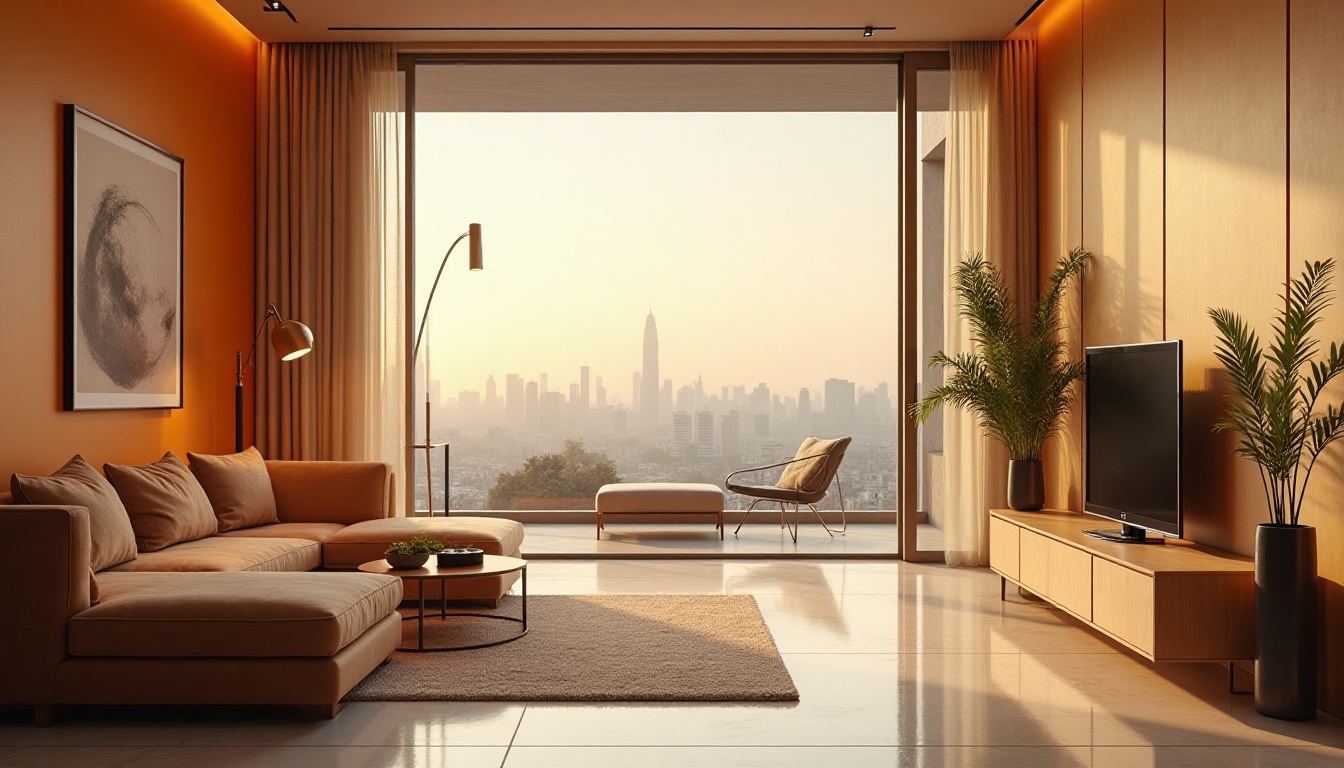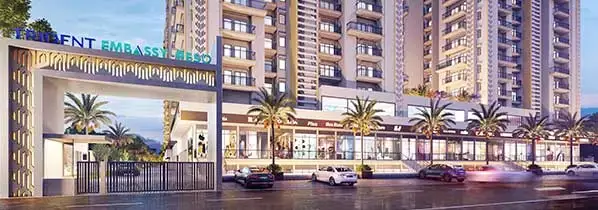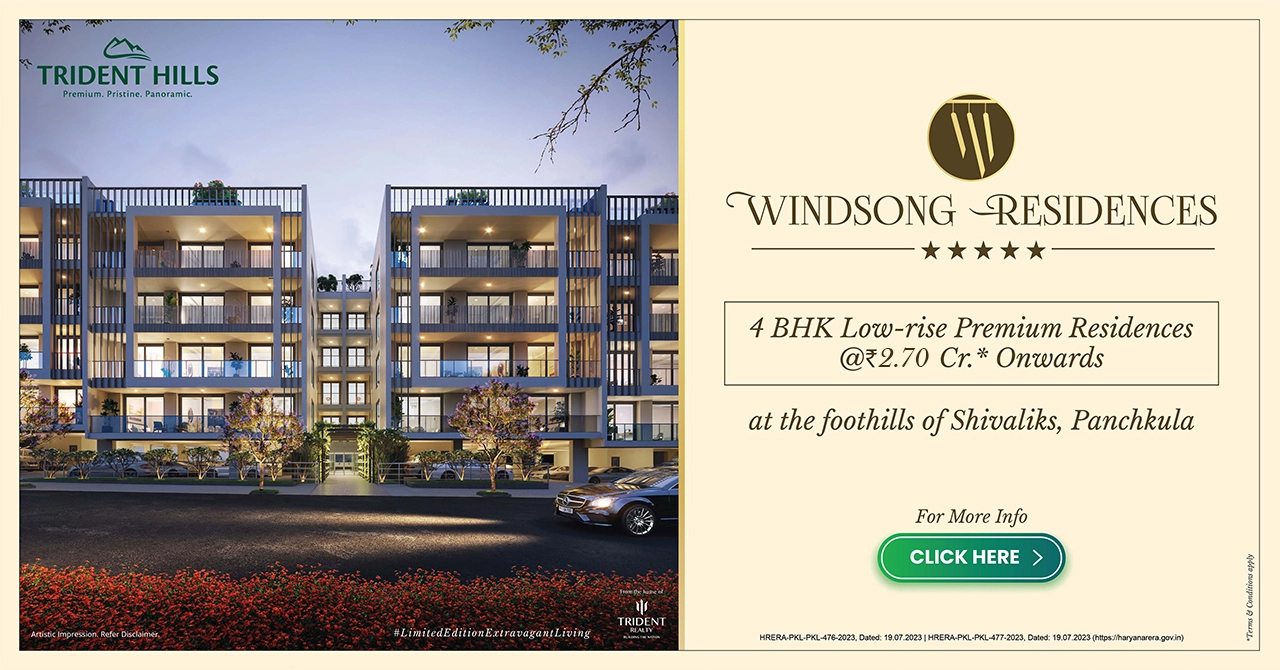
The Future of Luxury Homes in India
The definition of luxury in India is rapidly evolving—from the grandeur of location to the grace of intelligent living. For discerning buyers, luxury is no longer about excess; it’s about effortless sophistication, eco-conscious living, and tech-powered comfort. At Trident Realty, we’re not just observing this change—we’re shaping it. This blog explores the trends driving the next era of premium living in India.
A Booming Market Fuelled by Wealth and Aspiration
India’s luxury real estate market is experiencing unprecedented momentum, underpinned by robust economic growth and a burgeoning affluent class. According to Knight Frank’s Wealth Report 2024, India saw an 11% increase in ultra-high-net-worth individuals (UHNIs) in 2024, with projections indicating a 39% rise by 2025. This surge in wealth is translating into significant demand for premium residences, particularly in cities like Mumbai, Delhi-NCR, Bengaluru, and emerging hotspots such as Pune and Hyderabad. CBRE India’s India Market Monitor Q3 2024 report notes a 37.8% year-on-year increase in sales of luxury homes priced above ₹4 crore between January and September 2024, with Delhi-NCR, Mumbai, and Hyderabad accounting for nearly 90% of these transactions.
The appetite for luxury properties is not limited to domestic buyers. NRIs, leveraging favourable exchange rates and a strong emotional connection to India, are increasingly investing in high-end homes. ANAROCK estimates that NRI investments in Indian real estate could reach $14.9 billion by 2025, with luxury housing forming a significant portion. This confluence of domestic and international demand underscores the market’s resilience and its appeal as both a lifestyle choice and a strategic investment.
Evolving Buyer Psychology: Beyond Opulence to Experience
Today’s luxury homebuyers are redefining what constitutes a premium residence. While opulence remains a hallmark, the focus has shifted towards holistic living experiences that prioritise wellness, privacy, and personalisation. The COVID-19 pandemic accelerated this trend, prompting affluent buyers to seek larger, more versatile spaces that accommodate remote work, leisure, and family life. JLL India highlights that luxury properties with expansive layouts, private gardens, and wellness-oriented amenities—such as yoga decks, meditation zones, and spa-inspired facilities—are in high demand.
Wellness-Centric Design: Buyers are gravitating towards homes that promote physical and mental well-being. Features like circadian lighting, air purification systems, and biophilic designs integrating greenery are becoming standard in luxury projects.
Privacy and Security: With urban stress on the rise, gated communities and private enclaves equipped with advanced surveillance and biometric access are gaining traction. CBRE reports a 30% increase in demand for such properties in areas like Delhi’s Lutyens Zone and Bengaluru’s Whitefield.
Lifestyle as Status: Luxury homes are now potent symbols of social standing, offering exclusive amenities like private theatres, temperature-controlled wine cellars, and bespoke art galleries that reflect the owner’s passions and achievements.
This shift in buyer psychology is compelling developers to move beyond cookie-cutter designs and create residences that resonate with individual lifestyles, blending functionality with unparalleled sophistication.
Technology Integration: The Smart Home Revolution
Technology is revolutionising luxury living, transforming homes into intelligent ecosystems that enhance convenience, security, and efficiency. The Indian smart home market is projected to grow by 12.84% in 2025, with luxury residences leading the adoption of IoT-enabled systems. These advancements cater to the tech-savvy preferences of HNIs and NRIs, aligning with their global lifestyles.
1. Sustainability: A Core Pillar of Luxury
Sustainability has transitioned from a niche consideration to a defining feature of luxury homes in India, reflecting the growing environmental consciousness of affluent buyers. According to JLL India, over 40% of new luxury projects in 2024 incorporated eco-conscious features, and this trend is expected to intensify in 2025. HNIs and NRIs, often exposed to global sustainability standards, are prioritising residences that minimise environmental impact while maintaining luxury.
Green Certifications: Properties with LEED or GRIHA certifications are highly sought after, as they signify energy efficiency and sustainable construction. Developers are using eco-friendly materials, such as locally sourced stone and recycled wood, to reduce their carbon footprints.
Energy and Water Conservation: Solar panels, geothermal energy systems, and rainwater harvesting are becoming standard in luxury projects.
Biophilic Design: Integrating greenery, open courtyards, and water bodies into urban settings is gaining popularity, particularly in cities like Bengaluru and Mumbai, where pollution is a concern. These designs enhance aesthetics and promote well-being, aligning with the wellness priorities of HNIs. At Trident, our design philosophy champions this balance—reflected in the landscaped promenades and green terraces across our premium developments.
IGBC Certification: Properties certified by the Indian Green Building Council (IGBC) are increasingly favoured by discerning buyers. These ratings reflect a project's commitment to sustainability, reduced operating costs, and overall environmental performance.
Sustainability appeals to NRIs, who often compare Indian properties to international benchmarks, and HNIs, who view green homes as a status symbol and a long-term investment in resilience against climate change.
2. Technology Integration: Redefining Convenience and Security
The integration of advanced technology is transforming luxury homes into smart ecosystems, catering to the tech-savvy preferences of HNIs and NRIs. The Indian smart home market is projected to grow by 12.84% in 2025, with luxury residences leading the adoption of IoT-enabled systems Rustomjee. These technologies enhance convenience, security, and energy efficiency, aligning with the global lifestyles of affluent buyers.
Home Automation: Smart homes feature app-based controls for lighting, temperature, entertainment, and security, allowing remote management. Voice-enabled devices and IoT systems are standard in metropolitan projects, such as those in Mumbai’s Altamount Road and Bengaluru’s Koramangala.
Advanced Security: Biometric access, AI-driven surveillance, and integrated alarm systems address the privacy and safety concerns of HNIs and NRIs, particularly in gated communities and high-rise apartments.
Wellness Technology: Features like circadian lighting, air purification, and HEPA filters promote health, resonating with buyers who prioritise holistic living. These are especially popular in branded residences, which combine technology with luxury services.
NRIs, accustomed to smart homes abroad, and HNIs, seeking seamless integration of technology into their lifestyles, are driving demand for these features, making them a competitive differentiator for developers.
3. Branded Residences: Exclusivity Meets Prestige
Branded residences, partnerships between developers and global luxury brands like Ritz-Carlton, Four Seasons, or renowned designers, are redefining India’s luxury market. These properties, which surged by 143% in sales in Mumbai’s $2.3 - 5.78 million segment in 2024, offer unmatched exclusivity and prestige. They are particularly appealing to HNIs and NRIs, who value the quality assurance, superior service, and resale potential of branded homes.
World-Class Amenities: Branded residences provide hotel-like services, including concierge, housekeeping, and curated experiences like private dining or spa treatments, catering to the lifestyle aspirations of affluent buyers.
Global Design Standards: Collaborations with international architects and designers ensure residences meet global aesthetic and functional benchmarks, appealing to NRIs with international exposure and HNIs seeking social status.
Investment Value: Branded residences command premium prices and offer strong resale value, making them attractive to investors. In Pune’s Kalyani Nagar, branded projects are a top choice for NRIs due to their proximity to IT hubs and luxury amenities.
The exclusivity and brand cachet of these residences resonate with HNIs, who view them as status symbols, and NRIs, who seek familiar luxury standards in their Indian investments.
4. Other Key Trends Shaping the Market
Beyond sustainability, technology, and branded residences, several other trends are influencing the preferences of HNIs and NRIs in 2025:
Customisation and Personalisation: Buyers demand bespoke features, such as private art galleries, home gyms, or wine cellars, reflecting their unique tastes. India Sotheby’s International Realty reports that 60% of luxury buyers in 2024 sought customised wellness spaces or private gardens.
Wellness-Oriented Amenities: Yoga decks, meditation zones, and sports facilities are increasingly common, driven by post-pandemic shifts towards health-focused living. These appeal to HNIs and NRIs, prioritising mental and physical well-being.
Emerging Locations: While Mumbai, Delhi-NCR, and Bengaluru dominate, Tier-2 cities like Pune and Hyderabad are gaining traction due to improved infrastructure and affordability. CBRE notes a rise in luxury sales in Pune, with 810 units sold in Q1 2024.
Global Influences: Exposure to international design trends, such as minimalist aesthetics or open-plan layouts, is shaping buyer expectations. Developers are partnering with global architects to create residences that rival properties in Dubai or London, appealing to NRIs and globally mobile HNIs.
Buyer Preferences and Market Dynamics
HNIs and NRIs share a preference for residences that combine lifestyle enhancement with investment potential. HNIs, often domestic entrepreneurs or professionals, prioritise prime locations, bespoke designs, and social prestige, viewing luxury homes as symbols of success. NRIs, influenced by global living standards, seek properties with international amenities, strong ROI, and cultural resonance, often investing in branded residences or vacation homes in destinations like Goa or Dehradun. Both groups are drawn to developers with proven track records, as trust in execution and financial stability is critical, per CBRE’s findings.
The market’s growth is supported by government initiatives like RERA, which enhances transparency, and relaxed FDI norms, encouraging NRI investments. However, challenges such as high land costs and regulatory hurdles persist, requiring developers to innovate to meet buyer expectations.
Future Outlook
The Indian luxury real estate market is projected to reach $124.20 billion by 2030, growing at a CAGR of 21.81% from 2025, according to Mordor Intelligence. Sustainability, technology integration, and branded residences will remain pivotal, driven by the rising number of HNIs and NRIs and their demand for exclusive, future-ready homes. As urbanisation accelerates and infrastructure improves, luxury housing will continue to evolve, offering unparalleled opportunities for buyers and investors.
In conclusion, the future of luxury homes in India lies in creating residences that transcend traditional opulence, blending sustainability, cutting-edge technology, and global design standards. For HNIs and NRIs, these homes represent not just a place to live but a testament to their aspirations, offering a lifestyle that is as forward-thinking as it is luxurious.









